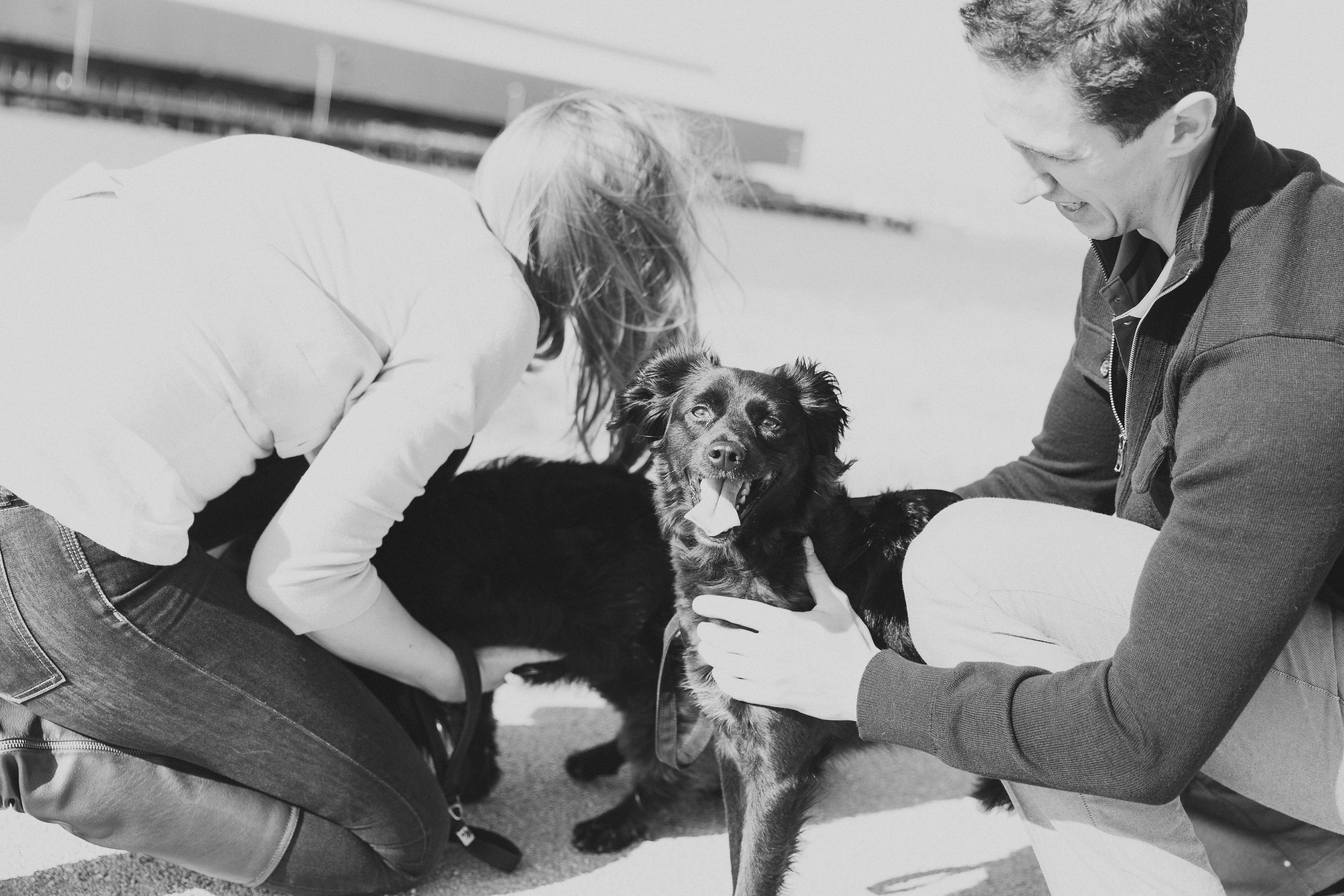Fear in dogs can be a result of anything from poor genetics to inadequate socialization at a young age to trauma and any combination of factors you can imagine. If you have a young dog and are trying to prevent these behaviors from arising, take the time to socialize properly at a young age. However, many people who rescue don’t have that luxury. And that’s where appropriate training comes into play.
When I begin working with a nervous dog, I always try to find something that will help change their expression – I want to have a tool that will allow them to put a smile on their face (food, toys, praise, anything!). Get creative, many dogs shut down in newer environments and will not engage as they might at home. I spend a lot of time reinforcing basic obedience commands. Many dogs find comfort in being able to perform a behavior they are familiar with, and it can help them to ease their anxiety in new places.
“Many dogs find comfort in being able to perform a behavior they are familiar with, and it can help them to ease their anxiety in new places.”
Most importantly, you have to create a bond of trust with your dog in order to help them overcome their insecurities. Clear and consistent expectations, basic training, and fun activities are always a solid place to start. And remember, while this may be some of the hardest work you ever do, there is nothing more rewarding than seeing your nervous nelly pup learn to be a confident, social pup!
*** Note: Photo is of that same nervous dog I mentioned at the beginning of this post. She has come a long way in building her confidence and even competes now in dock diving competitions!

I have a nervous pup and know training has helped immensely. Have you tried anything for your nervous dog? Share below!
Read more about Marie on our About page.
